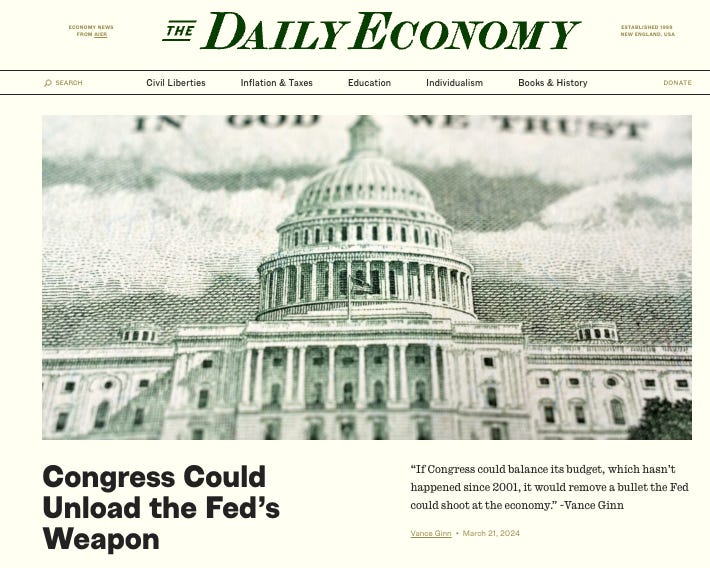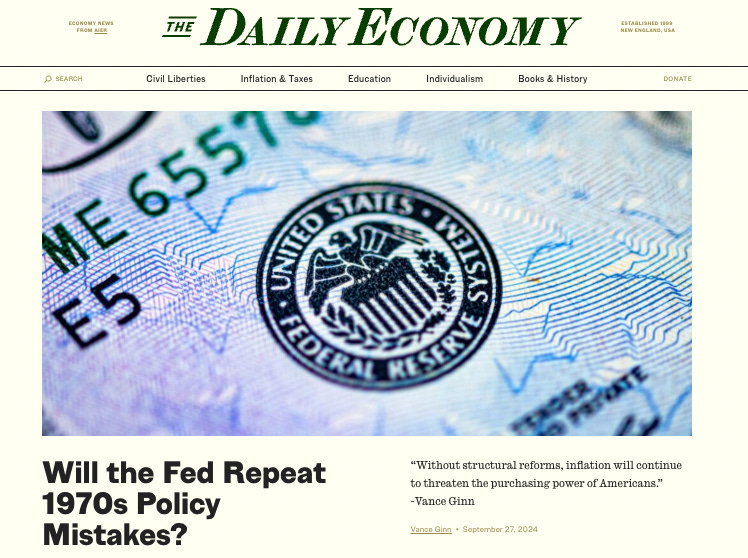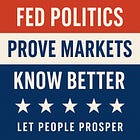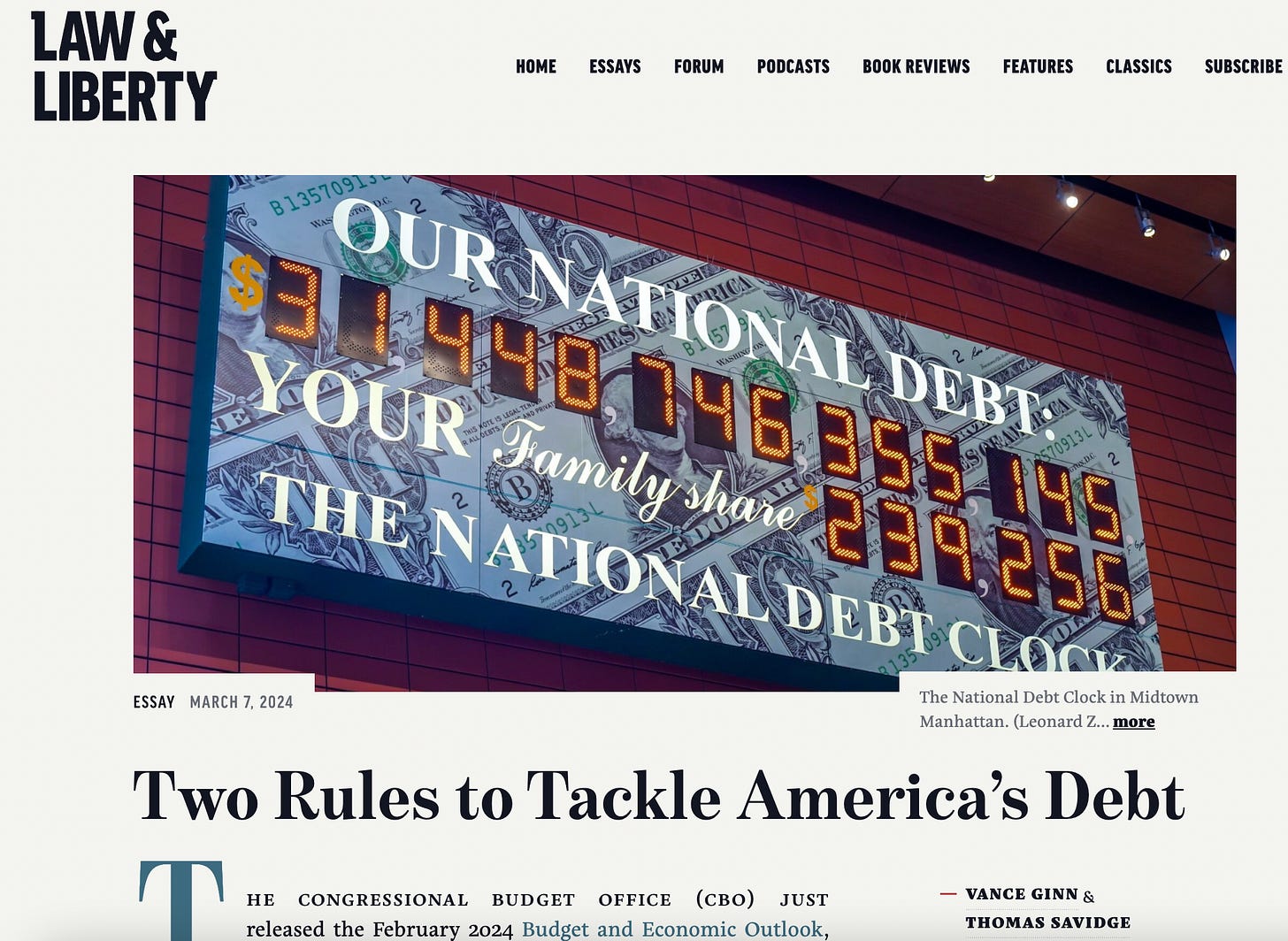Understanding the Fed: How Monetary Policy Hurts Americans | This Week's Economy Ep. 136
The Fed just cut rates again. Here’s how the central bank fuels boom-and-bust cycles, and what real reform looks like to let people prosper.
Hello Friends!
Last week, the Federal Reserve cut interest rates by a quarter percentage point, marking the second of what some expect to be a series of rate reductions in the coming months. The move came after new data showed consumer inflation rose 3% over the past year—slightly less than expected but above the Fed’s 2% inflation target. Traders are already betting on more cuts ahead.
But the real question isn’t whether lower rates will boost the economy in the short term. It’s whether the Fed has learned from its mistakes—or is setting us up for yet another boom-and-bust cycle.
In this episode of This Week’s Economy, we’ll break down what the Fed’s decision means, why it matters, and what real reform should look like if we want lasting prosperity. Catch the full episode on YouTube, Apple Podcast, or Spotify, and visit my website for more information.
HOW WE GOT HERE
The Past:
The Federal Reserve was created in 1913 under President Woodrow Wilson to help stabilize the economy—aiming to prevent financial panics, control inflation, and keep powerful financiers from manipulating markets at the expense of working Americans. For much of its early history, the Fed’s role was relatively limited to being a lender of last resort.
That changed over time, especially in the 1970s and 1980s. With inflation spiraling out of control, Fed Chair Paul Volcker took bold action, raising interest rates and tightening the money supply. It caused short-term pain with a double-dip recession but ultimately broke the back of inflation and helped usher in prosperity during the Reagan years.
But over time, the Fed has drifted far from those principles. Instead of maintaining stable prices and sound money, it’s fueled massive growth in the money supply by ballooning its balance sheet to unprecedented levels—undermining the value of the dollar in the process and wrecking the economy.
The Present:
Today, that misguided approach is catching up with us. Lower- and middle-income Americans are struggling to afford groceries, housing, and other essentials. The Fed’s “band-aid” policies—like monetizing federal debt and manipulating interest rates—have only papered over deeper problems while driving up the cost of living.
The good news? There’s an opportunity ahead. The Trump administration and Congress can chart a new course—one that restores sound monetary policy and sets America on a sustainable path to let people prosper.
Next, we’ll look at the policy changes needed to restore sound money and let people prosper!
1. Understanding The Fed’s Job

The Principles:
The Federal Reserve manages what’s known as “high-powered money”—the base of our financial system—through the assets on its balance sheet. These now include U.S. Treasury securities, mortgage-backed securities, and loans to financial institutions. Every move it makes influences how much money circulates through the economy and the price of money and credit.
My Take:
The Role of a Central Bank: The U.S. dollar remains the global reserve currency. Its strength depends on confidence—confidence in both fiscal discipline from Congress and monetary discipline from the Fed. Both have faltered. Reckless spending and easy money have weakened the dollar, driven up inflation, and risked shifting global economic power away from America.
The Dual Mandate: The Fed’s primary mission set by Congress is to maintain price stability and maximum employment. During the pandemic, it violated the first by flooding the economy with cheap money and by trillions in asset purchases, fueling higher inflation. Now, in overcorrecting with rapid rate hikes and quantitative tightening, it’s violating the second—slowing growth and opportunity.
End the Swing: This constant pendulum swing between stimulus and tightening creates the boom-and-bust cycle that hurts families and small businesses most.
Related Reading: I explained more about the Fed’s role and global confidence in the dollar in my piece with Chuck Beauchamp at The Daily Caller.
2. How the Fed Controls the Money Supply—and Fuels Inflation
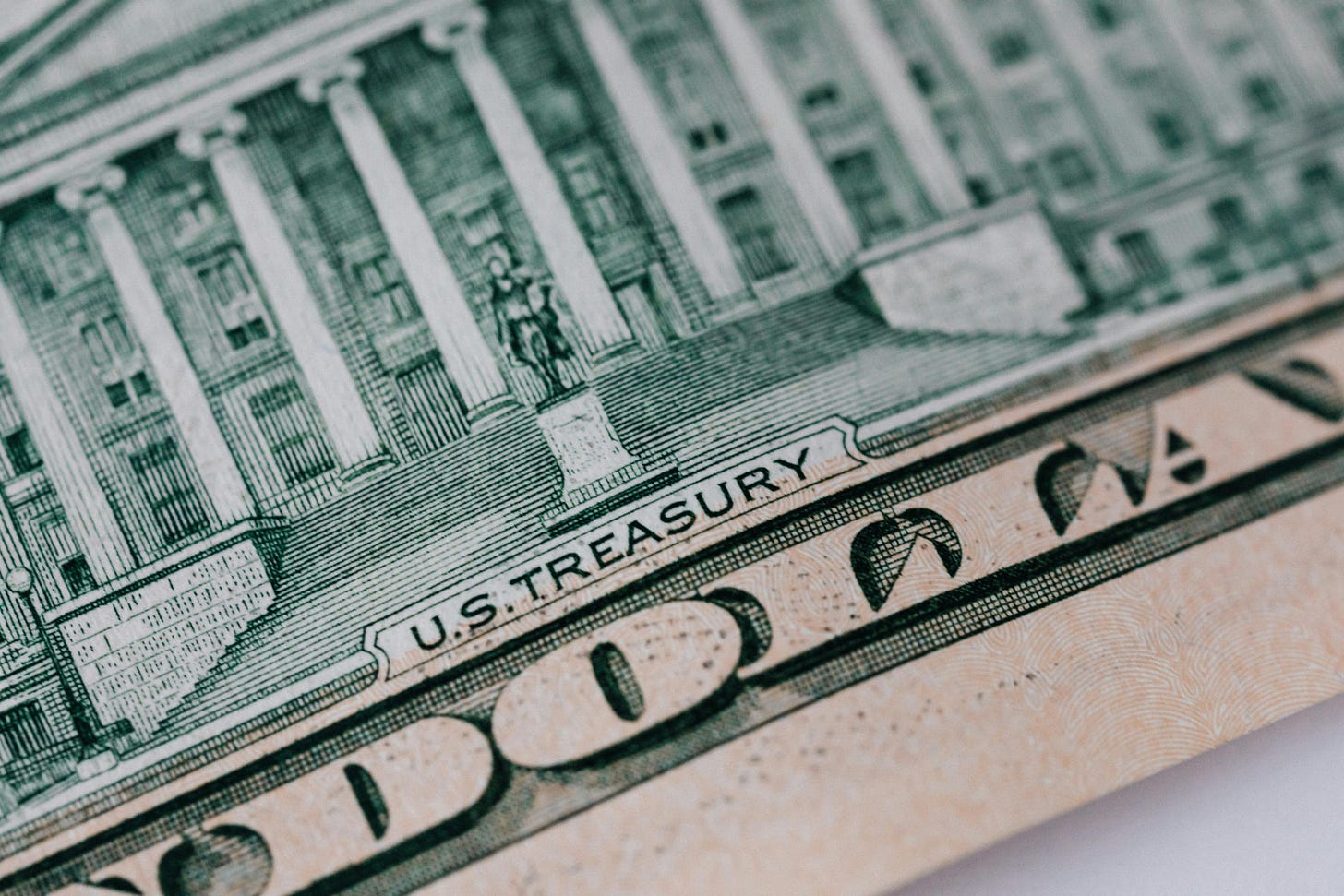
The Principle:
The Fed controls the money supply through its balance sheet and interest rate policies. When it buys Treasury debt or other assets, it injects high-powered money into the banking system. But this money doesn’t reach everyone equally or immediately. It flows first through the financial sector—banks, investors, and asset markets—before reaching the broader economy. Economists call this the Cantillon effect.
Milton Friedman, who extensively studied the role of the Fed in economic activity and inflation, said:
“Inflation is always and everywhere a monetary phenomenon. It is a result of a greater increase in the quantity of money than in the output of goods and services which is available for spending.”
My Take:
Market Distortions: That uneven flow of new money distorts prices and production. Specific industries boom first, pulling in resources and labor, only to bust later when the flow of easy money stops. The Austrian business cycle theory explains this clearly: artificial credit expansions cause artificial growth—and painful contractions.
Shared Responsibility: Congress plays a significant role as well. Out-of-control federal spending feeds the Fed’s appetite for Treasury debt, expanding the money supply and driving up inflation. Fiscal and monetary recklessness are two sides of the same coin.
The Path Forward: To restore stability, Congress must adopt a fiscal rule that reins in deficits, while the Fed returns to sound money principles. Together, that’s how we stop endless inflation and let people prosper.
Related Reading: Read more about the dynamic between Congress and the Fed in my column at The Daily Economy.
3. Reducing a Bloated Balance Sheet
The Principle:
The Fed’s balance sheet is the backbone of its monetary policy. It lists what the Fed owns—such as Treasuries and mortgage-backed securities—and what it owes —such as dollars in circulation and bank reserves. Every entry has ripple effects across the economy.
That balance sheet exploded during the pandemic—soaring from $4 trillion in early 2020 to nearly $9 trillion by 2022. Though it’s down to around $6.6 trillion today, it remains 75% higher than before the pandemic. That expansion fueled inflation by creating excess demand and blurred the Fed’s proper role—turning it from a monetary referee into a market participant.
My Take:
Shrink the Balance Sheet: A $6.6 trillion balance sheet, combined with runaway federal deficits and tariffs, continues to drive inflation higher. The Fed should make reducing that balance sheet its top priority.
Reduce Excess Liquidity: Instead of leaning on interest rate cuts, the Fed should focus on removing excess liquidity from the system. Shrinking the balance sheet is the most direct, lasting way to cool inflation.
Adopt a Rules-Based Approach: Before the 2008 financial crisis, the Fed’s balance sheet equaled about 6% of GDP; today it’s roughly 23%. A rules-based cap tied to GDP would restore discipline, transparency, and confidence in the dollar.
Related Reading: I expand on this in my article at The Daily Economy.
4. Who Decides What the Fed Will Do?
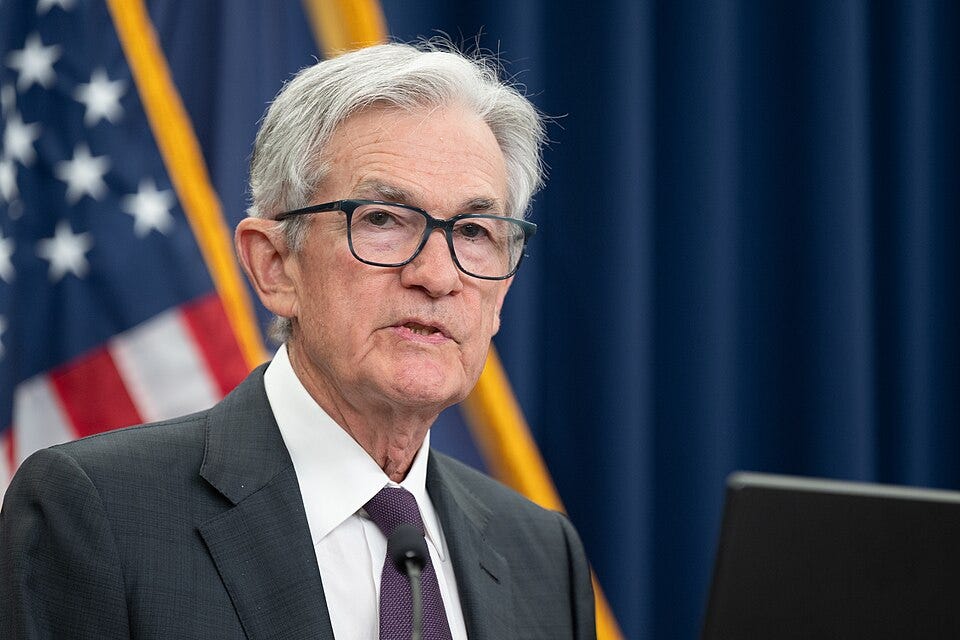
The Principle:
The Federal Open Market Committee—seven governors and five rotating Reserve Bank presidents—sets monetary policy for 330 million Americans. Twelve people deciding the price of money is not a recipe for efficiency or accountability.
My Take:
Beyond Personnel Drama: The answer isn’t finding the “right” central banker—it’s recognizing that no central planner can match the knowledge dispersed across millions of borrowers, lenders, and investors setting prices through voluntary exchange.
Price Controls Fail: We’d never allow a government board to set the price of beef or Bitcoin, yet we tolerate one setting the most important price in capitalism—the interest rate. Prices communicate scarcity and risk; when the Fed suppresses them, it distorts markets. As Hayek taught, markets—not bureaucrats—are best at discovering information.
End the Politicization: The Fed has wandered far beyond its dual mandate. Its job should be simple: protect the dollar’s value and act as lender of last resort. Manipulated rates are hidden subsidies—benefiting today’s borrowers at the expense of tomorrow’s. Let’s stop turning each FOMC meeting into a global guessing game. Publish a clear framework, stick to it, and let markets price risk.
Related Reading: See my commentary on the latest “personnel drama.”
5. Steps for Congress and the Trump Administration
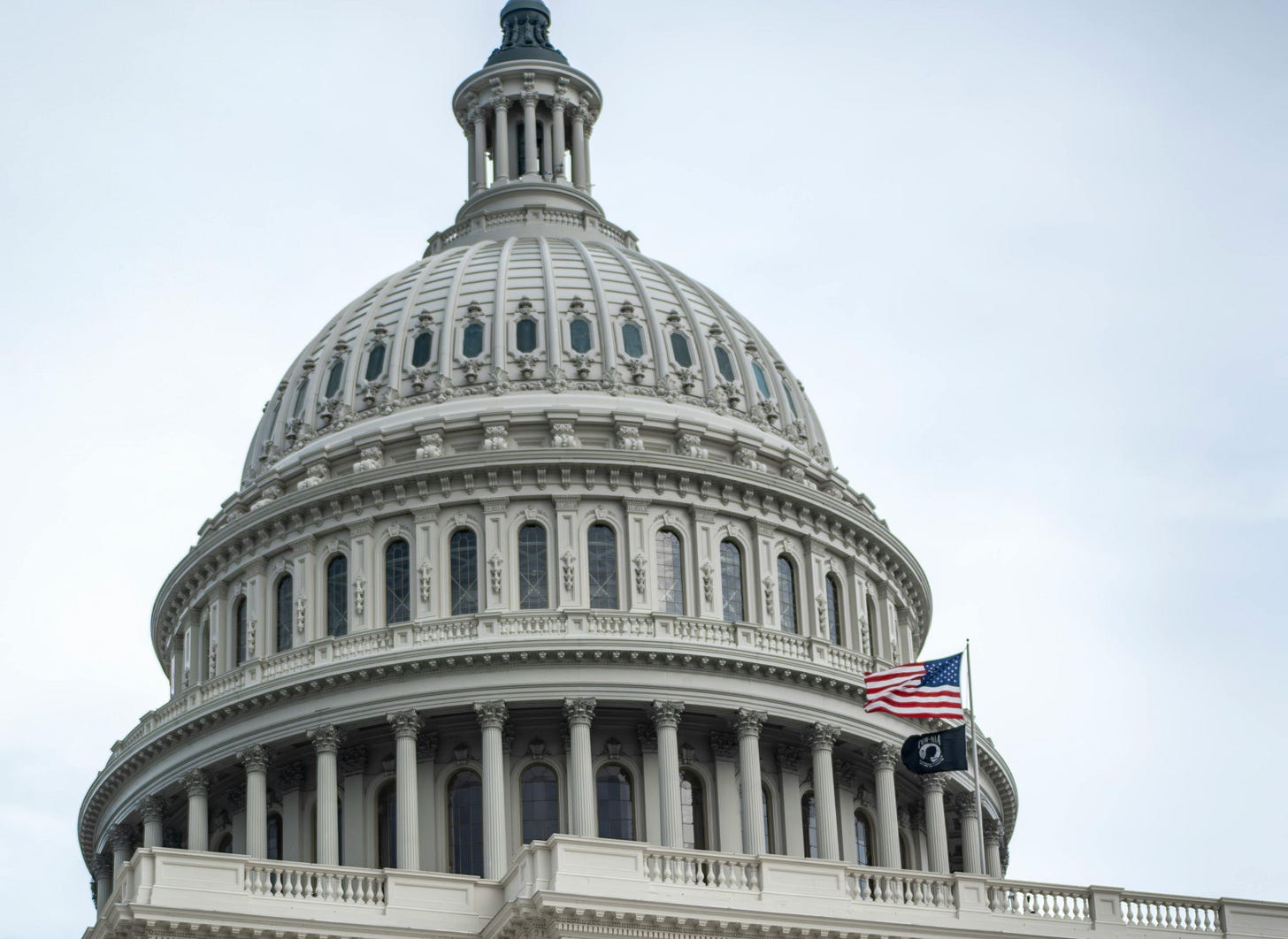
The Principle:
If America wants a financial system that fuels growth instead of holding it back, it must return to first principles: clear rules, open competition, and limited government interference. After years of central planning at the Fed, the Trump administration and Congress have a rare opportunity to restore sound monetary policy.
My Take:
A Path Forward: The Fed must substantially reduce its balance sheet, preferably by selling all non-Treasury debt. Congress must rein in deficit spending and limit the Fed’s emergency powers. The administration can promote fiscal discipline and transparency by conducting a full audit of the Fed. Together, these reforms would reduce malinvestment, promote stability, and open the door to broader structural reforms—including an eventual end to the Fed.
The Long-Term Benefit: By anchoring both fiscal and monetary policy to clear, rules-based limits, Americans won’t have to hope for the “perfect” candidate each election cycle. Proper constraints encourage responsible choices, lower interest costs, and strengthen America’s position in future crises.
End the Fed: The ultimate goal should be a monetary system grounded in sound money, not political manipulation. Until that day, we must hold the Fed accountable, rein in its mission creep, and return it to its core task: protecting the dollar.
Related Reading: Tom Savidge and I explain how rules-based monetary policy and spending restraint can tackle America’s debt crisis at Law & Liberty.
You can get these insights and more by downloading my full guide on Correcting America’s Financial Future through better monetary policy and financial regulations.
Thanks for joining me in this episode of "This Week's Economy." For more insights, visit vanceginn.com and get even greater value with a paid subscription to my Substack newsletter at vanceginn.substack.com.
God bless you, and let people prosper!
Keep reading with a 7-day free trial
Subscribe to Let People Prosper to keep reading this post and get 7 days of free access to the full post archives.




